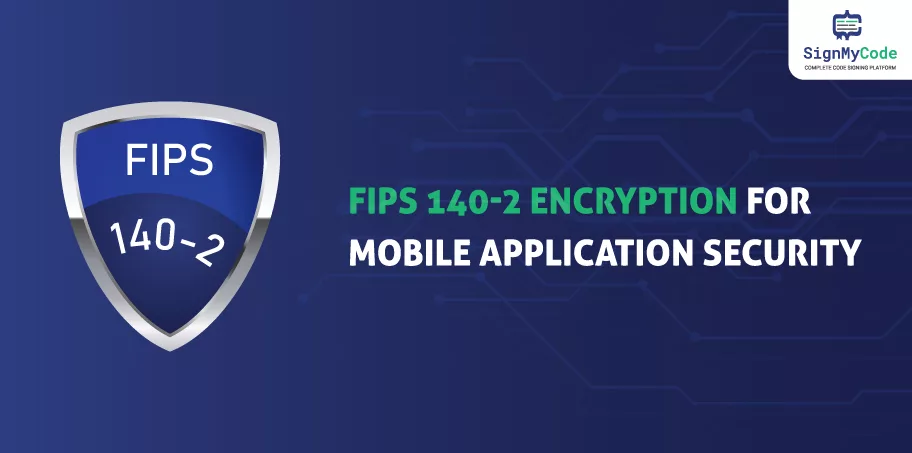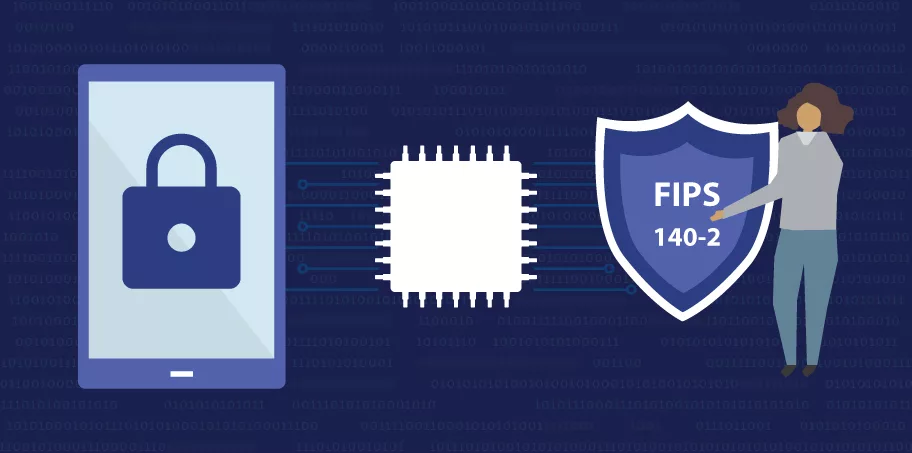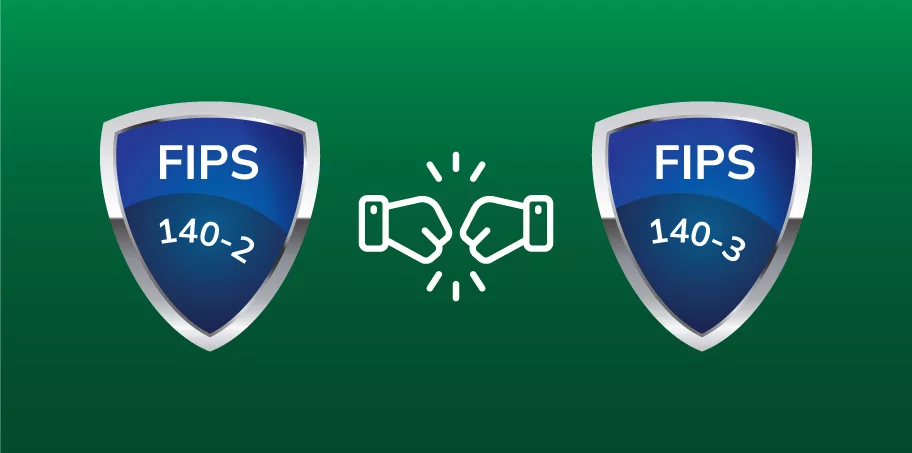FIPS 140-2 Encryption for Mobile App Security

Data security is crucial to creating mobile apps, and businesses that create or handle sensitive data must adhere to the Federal Information Processing Standards (FIPS).
Data is encrypted before it leaves the mobile device and is decoded in a safe environment thanks to the FIPS 140-2 encryption standard.
In this article, we will take a look at the standards and best practices for FIPS 140-2 encryption compliance, covering the fundamentals of ensuring a safe mobile app.
About FIPS 140-2 Compliance for Mobile Safety
All data communicated through an app must be encrypted using a cryptographic technique, such as AES, to comply with FIPS 140-2, and the encryption keys must be controlled and secured.
The National Institute of Standards and Technology (NIST) has released several publications outlining the specifications for FIPS 140-2 compliance and details on key management, cryptographic procedures, and algorithms.
All encryption procedures inside an organization, including data transfer via a network, data storage on a mobile device, and data access from a back-end system, must adhere to the FIPS 140-2 standard.
Organizations must also ensure that all utilized encryption keys are handled and safely kept in a key management system.
Who Developed FIPS 140-2?
The U.S. government created a set of security and encryption standards called FIPS 140-2. It addresses various security and interoperability criteria, assuring the security and dependability of the systems and tools utilized by the government.
Cryptographic modules, which are hardware and software parts used to secure data and communications, must adhere to the specifications laid out in FIPS 140-2.
These modules offer encryption, authentication, and key generation services in government systems, business networks, and consumer devices.
Cryptographic modules must adhere to strict security, trustworthiness, and dependability standards, which are ensured by FIPS 140-2. FIPS 140-2 is a crucial standard for safeguarding sensitive data and communications.
What is FIPS 140-2 Encryption?
The US federal government’s preferred encryption technique is FIPS 140-2 encryption. The most recent version of the FIPS standard is based on various security and interoperability criteria. Specific criteria for the employed cryptography modules are the topic of FIPS 140-2.

When safeguarding sensitive data is crucial, FIPS 140-2 encryption is utilized. It is made to offer sufficient security for data kept on computers, networks, and other digital media. Using FIPS 140-2, data is kept safe when transferred between networks or machines.
In the government, healthcare, and financial sectors, FIPS 140-2 is widely utilized. Large corporations and the military both utilize it to protect data security. It is primarily regarded as the industry standard for encryption as a result.
Recommended: What is FIPS? Detailed Guide on FIPS 140-2
FIPS 140-2 encryption is an all-encompassing method of safeguarding sensitive data. It is regarded as the industry standard for encryption and is utilized and recognized widely across various sectors. It is necessary for many industries and offers adequate protection for data stored on computers, networks, and other digital media.
Why is FIPS 140 Important for Mobile Apps?
All agencies must comprehend why FIPS 140 is significant for mobile apps. Encryption is the primary method used to safeguard sensitive data in mobile applications, which are frequently used to store, access, and change data.
Recommended: Must Know Approaches for Maintaining Mobile Application Security and CIA Traits
The encryption techniques employed in these mobile apps must adhere to the FIPS 140-2 standard in order to secure data. An agency shouldn’t buy the goods without the relevant FIPS 140-2 certificate.

One of the most substantial security guidelines for mobile apps is FIPS 140. Federal agencies must adhere to its requirements for the use of cryptographic security systems in order to protect their operations and communications.
A product won’t be bought if it doesn’t have a current FIPS 140-2 certificate, which suggests it hasn’t undergone the required stringent and thorough assessment and testing procedures.
FIPS 140-2 offers essential defense against possible security risks, including information leakage, unauthorized access, and intentional harm to mobile apps. It makes sure that programs are created and built with user data protection and safe system-to-mobile device connection in mind.
Recommended: FIPS 140-2: Validation VS Compliance
FIPS 140-2 also provides safe storage options to store sensitive data and monitors program behavior at runtime to assist in avoiding tampering or malicious activities.
Mobile apps need FIPS 140-2 because it adds an extra layer of security and protection, guaranteeing that user data is safe even while connecting to public networks.
Overall, every firm must secure mobile apps that handle sensitive data. The top standard for encryption certification is NIST and any mobile app handling sensitive data must meet FIPS 140-2’s strict specifications.
Developers may rest easy knowing that their software complies with all of the rules and specifications related to FIPS 140-2 by taking the required precautions to maintain data security.
What are the Requirements of NIST for Mobile Applications?
Any mobile application that handles sensitive data must comply with FIPS 140-2. The National Institute of Standards and Technology (NIST) has strict requirements that all data encryption must employ cryptographic algorithms and modules that have been certified by FIPS-140-2.
Federal and civilian government institutions must use FIPS 140-2 cryptographic modules. All data that is at rest or in transit must adhere to the strict NIST specifications related to FIPS 140-2.
NIST offers standards for both data-at-rest and data-in-transit and requires apps handling sensitive data to comply with FIPS 140-2’s encryption requirements.
Developers must consider the security of the keys used for encryption, the encryption methods utilized, and the overall security of the app to fulfill these standards.
Mobile app developers may guarantee that their software complies with NIST specifications and is FIPS 140-2 certified by following these procedures.
What are FIPS 140-2 and FIPS 140-3?
Two information security guidelines, FIPS 140-2 and FIPS 140-3 are applied to secure sensitive or priceless data within Federal networks.
While FIPS 140-3 is a slight improvement over the older standard, FIPS 140-2 is a requirement for the government.

FIPS 140-3 is based on the ISO 24759:2017 and ISO 19790:2012 requirements, while FIPS 140-2 is based on the ISO 19790 standard.
Physical security, portability, module interfaces, and cryptographic requirements are all covered in FIPS 140-2’s requirements for cryptographic modules.
Limiting the use of out-of-date algorithms and requiring that modules undergo security testing in difficult situations are two new criteria added by FIPS 140-3 to strengthen the security of cryptographic modules.
Conditional algorithm self-tests, wherein the algorithm self-tests are only carried out if utilized, are one of the revisions for FIPS 140-3.

Since not every algorithm is checked immediately, the pre-operational self-test is quicker. The self-tests can be executed after your application launches. Further analysis of the DRBG entropy sources is done.
Future technologies like cryptographic agility and the integrity of the cryptographic module are now supported by FIPS 140-3. It permits the US National Institute of Standards and Technology (NIST) to require the use of FIPS 140-3 by maintaining it as a different standard.
Wrapping up
Organizations must use a mobile app security solution that includes FIPS 140-2 encryption and key management to guarantee compliance with the different standards of FIPS 140-2.
A mobile app security solution should include features like secure key generation, safe key material storage, authentication and authorization restrictions, and the ability to securely install and update encryption keys.
Finally, companies should ensure their mobile app security solutions are constantly tested and certified to guarantee FIPS 140-2 compliance.
FIPS Compatible Code Signing Certificate
According to the CA/B forum guideline, Now, user’s private key is generated and stored in an HSM (Hardware Security Module) that compliant with FIPS 140‐2 Level 2 and Common Criteria EAL 4+, or equivalent
